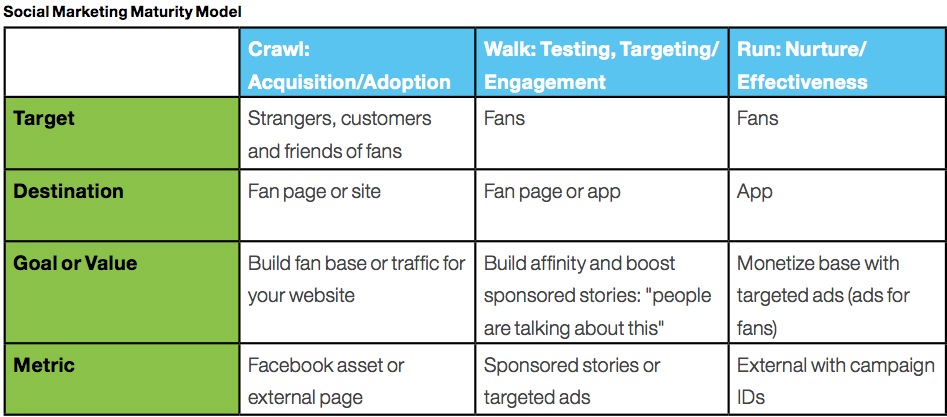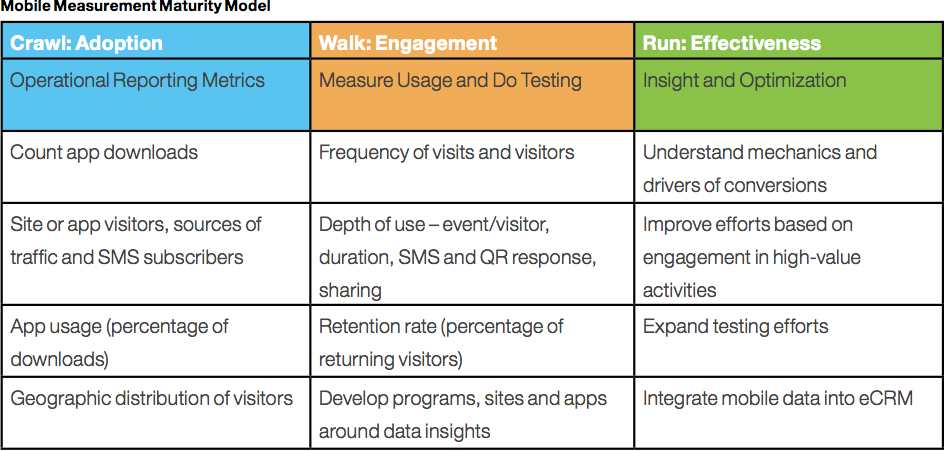- Category: September 2012 - Performance Marketing
 The Webtrends whitepaper "Unified Analytics for Web, Social and Mobile" points out that digital marketing has entered a new, fragmented universe, a multiple channel galaxy of web, social and mobile planets.
The Webtrends whitepaper "Unified Analytics for Web, Social and Mobile" points out that digital marketing has entered a new, fragmented universe, a multiple channel galaxy of web, social and mobile planets.
Especially consumer adoption of social and mobile is fast and furious, ramping up quicker than past channels, putting brands and chief marketing officers under pressure to understand consumers and meet demand. This fragmentation is disrupting the marketing landscape and presenting new challenges for determining investment and measuring effectiveness.
Many of the same challenges faced 15 years ago, when companies began web marketing, are at issue today in social and mobile channels. Brands are jumping on the social and mobile bandwagons to meet demand, but in the rush to get there are bypassing the fundamentals of digital marketing planning. Each digital channel has its own measure of success, but many marketers are unaware of what to measure and which key indicators are important.
A strategy that includes measurement, testing, targeting and optimization is a recipe for success in social and mobile channels, just as it is with websites. Knowing what and how to measure each channel can set the stage for continual improvement, customer engagement, and conversion and revenue. Advanced tools that allow data to be analyzed and optimized across all channels offer the best business case for achieving marketing performance by getting measurable return on marketing dollars.
The Digital Marketing Maturity Model: Crawl, Walk, Run
Entering a new channel without a plan for success that includes measurement and optimization can be costly, especially if you're "just experimenting". Thinking through goals and setting expectations can ease trepidation of entering an unknown channel, and instead set a path toward a new marketing opportunity.
To plan for success, brands are adopting a three-step process, which can be thought of as the "crawl, walk, and run" process that involves measurement, testing and targeting, as well as nurturing and effectiveness:
- Crawl: This is an operational reporting stage, where brands measure what matters to a company's key performance indicators, such as adoption of apps or acquisition of fans.
- Walk: Testing and targeting allows brands to apply insights from measurement to build engagement and improve the customer experience.
- Run: Nurturing users with targeted marketing results in conversions and revenue, providing brands with a true picture of marketing effectiveness

Social Marketing: Connections that Count
Social media itself is changing. Facebook has been primarily known as a community site where friends could communicate and fans could engage with their favorite brands. But Facebook has evolved. In just a short time, Facebook has become a powerhouse of ad inventory, more than Yahoo!, Microsoft, FOX and AOL, with nearly 180 billion U.S. display ad impressions alone. It is now a performance environment filled with media and ad campaigns, click-throughs, conversions and revenue streams.
Strategies learned through online and database marketing can also be applied to Facebook: Fans are 100 percent opt-in subscribers comprised of customers and potential customers; Ad units are email campaigns; Apps are landing pages; and the Fan Page is a website. And just as with online marketing, campaign performance can be measured, tested, targeted and optimized to gain enhanced results and fan engagement.
To make Facebook connections count, it is important to follow the crawl, walk, and run process: acquisition, engagement and nurture, with nurture being the level that brings most value, either in conversions or revenue.

Mobile devices, from smartphones to tablets, have become the remote controls for daily living. Usage is big and ramping fast, and global brands are rushing to invest billions of dollars in mobile apps, sites and advertising - even before they have a marketing strategy in place. As with other digital channels, knowing how customers are using mobile is vital to determining where marketing budgets and resources are best spent.
Setting up a plan for measurement before launching an app or a mobile ad campaign is key to a successful endeavor. That's why it's important to know what metrics are meaningful at each stage of mobile marketing.
Initial metrics differ slightly than those for social marketing, but the plan for success is the same.
Again using the crawl, walk, run analogy, mobile channel success is a three-stage measurement process of adoption, engagement and effectiveness, a continuous process where brands gain and identify users, learn their behaviors, iterate offerings, measure effectiveness, and improve efforts.
It's clear that the number of downloads or site visits is just the beginning of measuring mobile success. Are customers using their phones and iPads on Twitter, Facebook or texting? For QR codes, banking, purchases, comparison shopping, reading the news, locating a restaurant? Or have they ignored your app completely? It’s important to know. The more data available, the more opportunity there is for consumer engagement that is meaningful, influential and ultimately, profitable.
While brands are quickly engaging in both social and mobile marketing, neither effort should be treated as stand-alone activities, but rather as complementary to other digital channel activities.
Unified Analytics - Maximizing Return across all Channels
Rich data is needed to measure a return on marketing investment. A robust analytics solution recognizes the difference between channels, provides deep metrics from each channel, and then enables graphical reporting across all channels. This means using an open analytics platform that is designed to accommodate the peculiarities of diverse technologies.
Marketers are warily navigating their way through the digital landscape. While uncertainty is a factor challenging even the most seasoned brand, fragmentation presents opportunities for customer engagement on many levels.
A concern about a return on investment is a valid one, and the issue is made even more complex by the fact that there is no consistent metric across channels. However, by following this four-point recipe for digital marketing success, brands can achieve a competitive advantage:
- Collect data across all your digital channels;
- Measure and improve online user experience across your website, social media channels and mobile devices;
- Segment your customer base according to online behavior over time;
- Optimize and deliver the most relevant content and promotions that drive your customer acquisition, conversion, retention and engagement.
Last but not least, just always keep in mind that digital marketing starts with a solid plan for measurement and optimization.
Source: Webtrends
By Anjum Siddiqi


